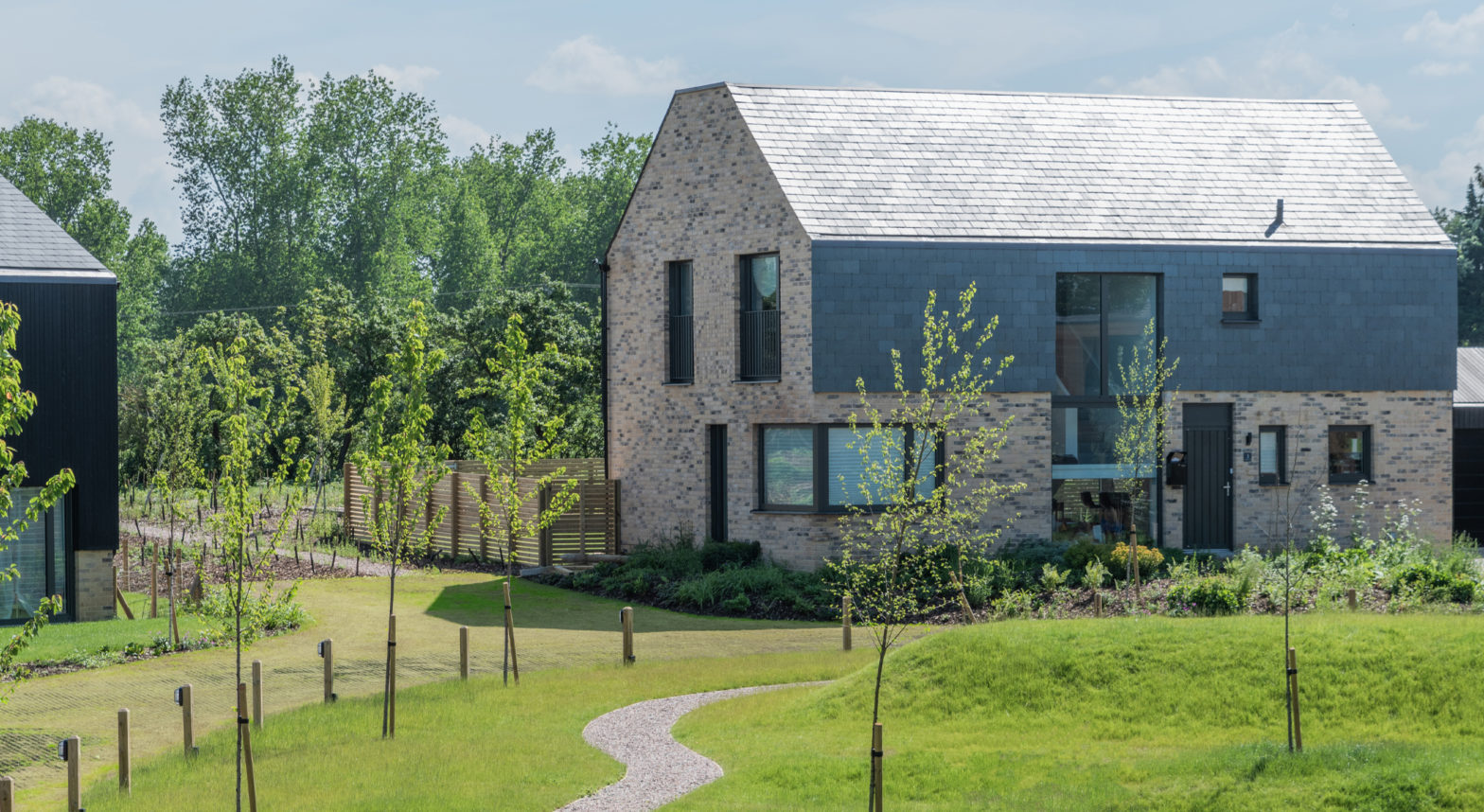
What is a sustainable landscape in the context of climate change?
We worked very closely with Ann Rowland (Director of Landscape Perspective) during the design stages of our Fairbrook Grove scheme, to create a landscape-led housing development that strives to apply Home Zone principles in a new woodland setting, reducing the amount of space dedicated to roads, pavements and car parking and prioritising landscaped communal amenity, ecology, tree planting and greenspace. We are very proud to host Ann Rowland’s Think Piece on designing and maintaining sustainable landscapes.
“We are encouraged to plant native species as part of our drive to create sustainable landscapes because it is widely believed that a sustainable landscape is one that conforms to the environment surrounding it, requiring inputs such as water and fertilizer that are naturally available, with little or no additional support.
Native planting should therefore be self-sustaining over long periods of time and if a mix of locally prevalent and locally sourced material is selected, exist in harmony with its local ecosystem and should be diverse enough to remain resilient through climate change, and productive indefinitely.
We know that climate change is a complex subject, but we are now committed by law in the UK to achieve net zero emissions by 2050 and to do this we need to plant more trees, and to do so urgently, as they take time to mature and contribute.
The Committee on Climate Change are very clear that the current approach to land use is not sustainable, and we should be aiming to plant around 30,000 hectares of new woodland in the UK every year which amounts to approximately 1.5 million hectares by 2050.
The Woodland Trust calculate that we need to increase the UK’s woodland cover from 13% to at least 17% but according to Ian Gambles, Chief Executive of the Forestry Commission, planting trees can only make a limited contribution to net zero – by 2050, an even on the scale the Committee on Climate Change wants to see, the new trees would absorb perhaps 10% of residual emissions if all other reduction measures are implemented.
At Fairbrook Grove, in Faversham, Kent, a residential scheme designed around the principles of sustainability, we are in the process of planting around 200 native trees, 1500 native shrubs and ground covers, 3000 native hedge plants, 1200 native bulbs and wildflower plugs, and nearly 3000 wildlife beneficial herbaceous plants, together with 1500 square metres of wildflower meadow. Given the fact that the site is only just over 4 hectares, and we are only constructing 14 houses as designers and developers we have demonstrated what can be achieved in a small space, with a design team and client committed to making our contribution, however small, to this net zero goal.
Importantly, for both the client and the residents who have committed to buy into the ethos of this sustainable community, there are not only ecological but significant financial benefits to be had from creating a sustainable landscape in the long term.
Whilst a robust and practical management plan and maintenance strategy is a necessity to ensure successful establishment of the new landscape, the sustainable landscape designed at Fairbrook Grove will in the long term reduce maintenance costs, as natural regeneration will be encouraged which supports genetic mixing, and can enable adaptation to climate change and other threats such as tree disease, reducing the need for importing tree stocks of which we are increasingly becoming aware carry an increased risk of introducing new pests and diseases.”